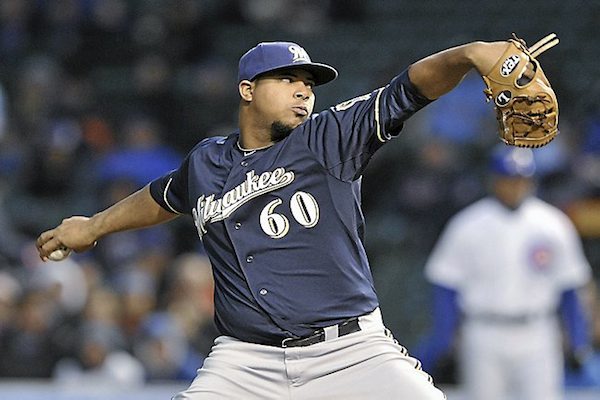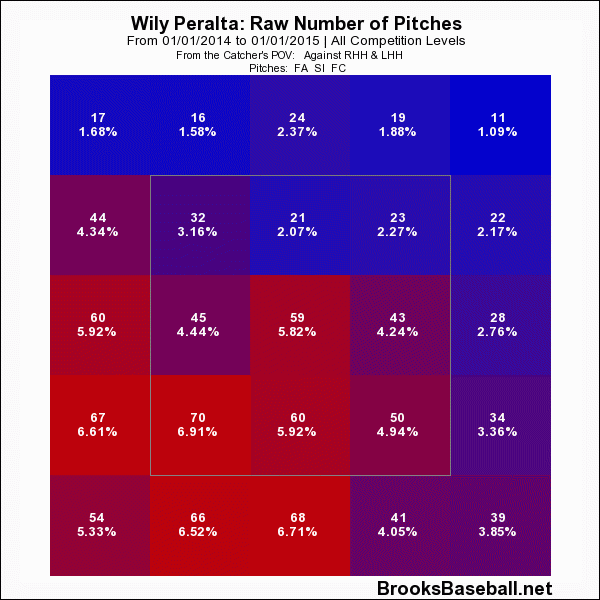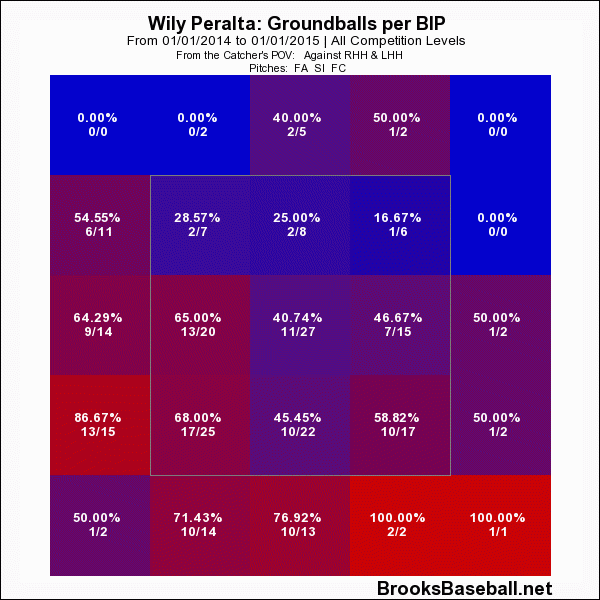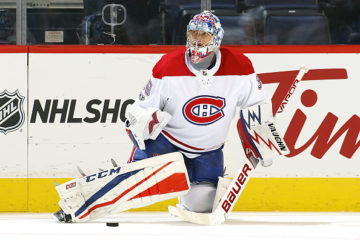2014 Fantasy Baseball: Wily Peralta is Useful

This season has #blessed us with a ton of good stories from a pitching perspective. Clayton Kershaw has, somehow, gotten better. Corey Kluber, Dallas Keuchel, and Phil Hughes have taken huge leaps forward. And veterans, like John Lackey, have put their demise on hold for one more year. Wily Peralta got lost in the mix somewhere. We don’t talk about him much, despite his place on a first place Milwaukee Brewers team.
The nonexistent coverage of Peralta is because he isn’t sexy. Nothing he does is. I wouldn’t have even had the idea to write about him if I didn’t stumble onto his page. He’s just there; throwing well, inning after inning. Peralta’s always been on prospect radars thanks to his heater. His fastball, in 2014, has averaged 95.4 mph, according to Fangraphs. Heat was never issue. Missing bats and walking batters, however, were.
[am4show have=’p3;p4;p7;p11;’ guest_error=’Front Office’ user_error=’Front Office’ ]
In 2013, Peralta walked 9.1% of the batters he faced, striking out 16.1%. This season, his strikeouts have improved a little, to 17.4%, but his walks have dropped to an impeccable 5.8%, placing him in the top-30 among qualified starters. His zone% is up, backing up his improved walk rate. That same rate has also been helped a little by the fact that opposing batters are swinging a little more than they used to [45.2% in 2013; 46.5% in 2014]. His strikeout rate is a little harder to pin down. Two of his pitches have improved their swinging strike rate; two have declined. He’s undoubtedly been helped by getting ahead more, pitching to contact. And as we know, what type of contact is made matters a lot.
Peralta’s MLB career, in total, is 307.2 innings. In those 307 or so innings, he has a 52.5% groundball rate. That number gives him the ninth best groundball rate among starters with at least 300 innings pitched since 2012. And he’s in good company. Garrett Richards, Rick Porcello, and Doug Fister are close by. Felix Hernandez and Hisashi Iwakuma are just a short trip down the list.
Both versions of Peralta’s fastballs get plenty of grounders. They’re both in strike zone often. And more importantly, they’re down in the strike zone.
Rarely do one of Peralta’s fastballs break the threshold and finish up in the zone. It isn’t coincidental that the majority of these pitches are beaten into the ground.
The only thing holding Peralta back is his performance versus left handed batters. It was a question coming into 2014, and it hasn’t been answered in the slightest. Last season, left handed batters hit .255/.342/.411 (.333 wOBA) versus Peralta. Those numbers have gotten even better in 2014; they’re hitting .305/.337/.446 (.344 wOBA) currently.
Peralta’s pedestrian use of his change-up is likely the culprit. Last season, Peralta used his change-up 6.7% of the time; 8.4% versus lefties. It doesn’t appear he’s gotten any more comfortable with the offering this season, using it 4.8% of the time, in total, and only 6.4% versus left handed batters.
He may have an excuse, though. His change-up, quite simply, hasn’t been very good, especially versus left handed batters. They’ve slugged .625 against it this season, after slugging only .300 versus it last year. Granted, it’s a smaller sample size, but the early returns aren’t good.
The movement on the pitch hasn’t changed much. It doesn’t have much fade. Nor does it feature a ton of drop, although it has dropped a little more this season. Essentially, it’s a slower version of his sinker. Peralta’s changeup – and his trust in the pitch – is going to have to improve in order to keep left handed batters at bay.
Even without a workable change-up, Peralta is still very interesting. Gas and a good slider can go a long way, if you can command both of them. Peralta has shown better command this year, so he’s getting much better results. Sometimes it takes a little time for guys to realize their potential and put things together. Peralta has begun to do just that. And I like him to carve himself a little room in the mold of a Jose Quintana or Jon Niese. Don’t laugh. Those pitchers have value. Perhaps more than we realize as we’re searching for the next big thing, instead of appreciating the boring, useful player that is easily attainable.
[/am4show]







